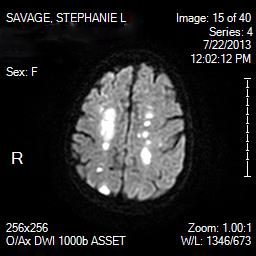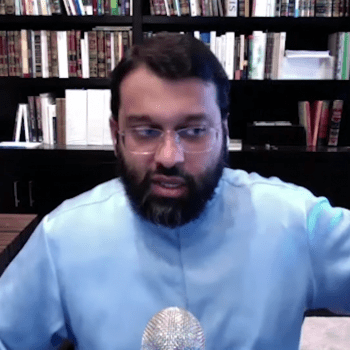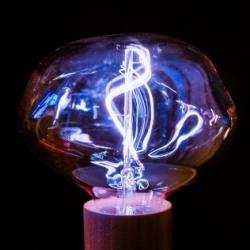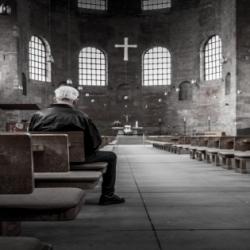
In the coma-dream from which I awoke after my six weeks of coma, I was a paleontology student studying in the American Museum of Natural History.
This was a childhood dream on both accounts, though I never fantasized about being attacked by office equipment in the process, as I was in the dream. However, I’m not a scientist, as Republican presidential candidates so proudly proclaim when trying to avoid taking a stand on well-established science the rabid fringe of their party rejects. How many votes did the otherwise looney Rand Paul lose when he affirmed the age of the earth as 4.5 billion years in Tuesday’s Republican debate (even if he was using the fact to wriggle out of having signed a document acknowledging the existence of human-caused climate change)? That hedged apostasy was damning enough in eyes of many anti-science Republicans.
I wonder how Galileo would’ve fared as a Republican candidate?
I don’t believe in God, as you may have guessed from the fact that I’m writing for the Secular Spectrum. I do, however, have faith in science. But it’s a different kind of faith than the religious sort, not based on revelation, but on empirical evidence. Science doesn’t claim absolute truth. Rather, it strives to get ever closer to the truth.
Religion offers only mystery, which science seeks not to solve, but to come as close as possible to understanding, drawing on accumulated knowledge. It’s “I feel,” versus, “I know (but I will change my mind if evidence suggests otherwise).” Of course, science doesn’t always work that way because scientists are human, but that’s the ideal.
In my first post for the Secular Spectrum, I mocked the prevailing “theory” among believers to explain my admittedly unlikely recovery from multiple strokes on both sides of my brain, multi-organ failure, and the aforementioned coma. It was a miracle, they insist. Indeed, in Miracle Girl, as well as in my Skeptical Inquirer article “Covert Cognition: My So-Called Near-Death Experience,” I’ve asserted that I owe my recovery not to the hand of God, but to the work of natural selection. But that takes a lot of chutzpah when you were a 95-pound weakling who was hardly a poster child for the survival of the fittest.
So what do I mean? Let me first present a snippet from my Skeptical Inquirer piece because it concisely explains the kind of brain damage I suffered and the reasons for my remarkable recovery despite it.
My neurologist told me that the reasons I’ve recovered so well are I was younger than the average stroke victim, and most of my brain damage was in the watershed areas. Watershed areas lie between two major arteries. By the time blood reaches these sections, there’s less oxygen in it. It’s a bit like a wetland fed by two trickling tributaries. Together, they provide just enough water, but when the flow diminishes, the land between the tributaries dries up. As she explained, watershed areas don’t generally control vital functions. They die more quickly than more important regions, but also spring back faster after damage has occurred. Ain’t evolution grand?
But why was my recovery due to evolution? To me, a system that sacrifices the most dispensable and recoverable areas first is a strong indication of neuronal triage and most likely an evolutionary adaptation.
Imagine an unlucky Cro-Magnon suddenly looks up to find her neck in the jaws of a huge cave lion. She just manages to let out a cry before she passes out, but the oxygen supply to her brain has slowed to a trickle as she begins to suffocate. Luckily, her initial shout summons her band before she could become big cat chow. Her kinfolk lob spears and stones at the lion. They don’t have time to carefully aim, but wounded, the feline limps away.
They immediately turn their attention to the fallen victim, who is breathing again…barely. They bind up her wounds and carry her back to camp. She’s in a coma, but they don’t know that. Perhaps they think she’s in some kind of mystical trance. They summon the band’s medicine woman, who throws some magic powder into a fire, which flashes green momentarily. The shaman grinds up some herbs, chanting as she binds a poultice to the victim’s forehead. A few days later, the woman wakes up from her coma, “cured” by the shaman. Now, it’s only a matter of time before she’s recovered enough to once again to become a productive member of her clan.
Of course, the shaman had nothing to do with her recovery. In actuality, when the sabretooth chomped down on her neck, her brain performed the equivalent of what power systems do during an electrical emergency, shutting down less vital systems first in hopes of preserving the whole. It was her good fortune that she was saved before the more sensitive systems of her brain were irreparably damaged.
And it was my luck that my strokes didn’t happen in the Upper Pleistocene, or even a few decades ago, before our modern equipment and accumulated medical knowledge had developed sufficiently to save my life. Indeed, that’s the other way I owe my survival to evolution. Human society is a massive parallel processor, linking millions of brains across the centuries. Without the collective intelligence of the countless humans who developed the technology and gathered the medical knowledge which combined to save my life, I wouldn’t have had a chance.
However, Cro-Magnon 2, an adult female found in the same cave as the type specimen of her Paleolithic kind—Cro-Magnon 1—survived for some time with a serious head injury without benefit of any of that technology. Perhaps you’re imagining that she received that skull fracture when Mr. Type Specimen himself dragged her around by her hair…a fantasy dreamed up by a man, no doubt. More likely, she suffered that injury while pursuing a small animal over rocky terrain or was caught in a rock fall. She would’ve required considerable care while she healed.
Still, even with the instinctive caring such fossils show, an early modern human wouldn’t have survived my illness. If watershed-area damage is indeed the signal of an adaptation, it couldn’t have evolved to save cases as serious as mine. But that’s also true for my lung and kidney failure; the ventilator and dialysis allowed my organs to revive well past what would’ve been the point of no return for our ancestors. And it’s unarguable (except by fundamentalists) that our body’s healing mechanisms have an evolutionary origin.
Although all biological systems are the result of natural selection, admittedly, my hypothesis is unsupported by any specific empirical evidence. But then so is the miracle theory. Why did I survive? Because…God. In fact, even with all our technology and medical knowledge, I was still expected to die. As I’ve said, when doctors say you have a one percent chance of dying, you might want to draft your will. But one percent of such patients will draw the Golden Ticket.
I won the chance for the everlasting gobstopper of life. Well, if not everlasting, at least an opportunity to live out my natural lifespan.
So when you get down to it, what explains my survival? Evolution and dumb luck. Right now, my brain is rerouting my synapses around that watershed brain damage, which my doctors mistakenly diagnosed as “profound.” What account for that plasticity? You guessed it, evolution. Judging from the skeletons we’ve found, our ancestors were getting bashed around quite a bit. Indeed, Cro-Magnon 1 survived a fungal infection that left his skull pitted. Other skeletons exhibited fused vertebrae. And that’s just the remains found in that one famous rock shelter in southern France.
In response to a blog post explaining how my survival was not a miracle, a fundamentalist friend said, “Just because your recovery can be explained, that didn’t mean God wasn’t involved.” Apparently, the fact that doctors have performed the standard lifesaving procedures doesn’t rule out an act of God in her book, just as it doesn’t preclude a cured patient from counting as a miracle for candidates for sainthood, no matter what lengths their doctors took to insure their recovery. I guess God really does help those who help themselves.
Maybe the great big omnipotent genie in the sky did nod his head and will this long-time atheist to survive. But I prefer to put my faith in something that can be backed up with scientific knowledge. The proof the religious seek is not empirical, but the kind that confirms their faith. That’s why so many people want to believe that my recovery was a miracle. But as for me, I say…
Praise be to Darwin.















